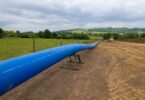Exclusive interview: We caught up with Dragan Savic, CEO at Netherlands-based independent water research institute KWR, to find out more about the emerging field of hydroinformatics and the organisation’s holistic approach to digital transformation…
What exactly is hydroinformatics?
Hydroinformatics is quite often erroneously considered a purely technological field of developing and applying information and communication technologies (ICT) to water challenges. Yes, it is that, but in my view, it is also much wider – a management philosophy developed to respond to global water challenges, made possible by technology.
Therefore, it is not only ICT or IoT-related, but also fully embraces the human-in-the-loop principle with all associated considerations such as ethics, bias, equity, privacy, data protection, and more.
What work is KWR doing in this field?
At KWR we embrace the aforementioned holistic approach to hydroinformatics and embed those principles in our activities in the entire water cycle.
The key role of hydroinformatics at KWR is to be the ‘eyes and ears’ of the water industry and a strategic partner for the digital transformation of the water sector.
As digital issues are becoming a prerogative for water managers, KWR is in an excellent position to support the water sector in keeping them on track with the digital transformation they have already embarked on.
The Hydroinformatics Theme within our Joint Research Programme (BTO) is also ensuring that water utilities have a common vision and understanding of challenges and opportunities in deploying digital technologies.
How does hydroinformatics improve water management?
The key component of any management, including that involving water systems, is to be able to understand the process being managed and make it more efficient.
Hydroinformatics integrates everything from data collection and preparation, to model development for prediction and decision-making in the water sector.
What are some notable use-cases of hydroinformatics in the water industry?
There are numerous examples of use-cases in the water industry. For example, the use of machine learning for early warning systems, the use of AI-based optimisation to schedule the redesign and rehabilitation of water infrastructure, or determining the optimal placement of sensors.
At KWR we also employ machine learning in various fields of water management, from the prediction of the condition and useful life of pipes, through water quality assessment and treatment works improvements, to chatbots for customer service by drinking water companies.
All of those improve the effectiveness and efficiency of dealing with complex water management challenges.
What are some of the barriers to the implementation of hydroinformatics systems?
Hydroinfroamtics and digital transformation face a number of technical, organisational and cultural barriers.
For example, the reliance on a single technology that relies on other technologies, like mobile data, a lack of standardised approaches and cybersecurity, are just some of the technical barriers.
Organisational barriers include a lack of strategy and financial resources and often missing skills.
Cultural barriers are also present, including risk aversion, traditional approaches to dealing with challenges and fear of job losses.
Do you think hydroinformatics will be an important approach to tackling some of the industry’s greatest challenges (climate change, soaring costs, ageing infrastructure etc.) ?
By being able to integrate multi-source, multi-resolution data, promote smart investments in digital water infrastructure, ensure benefits for consumers and strengthen cybersecurity, hydroinformatics will make the water sector move toward a climate-proof future.







